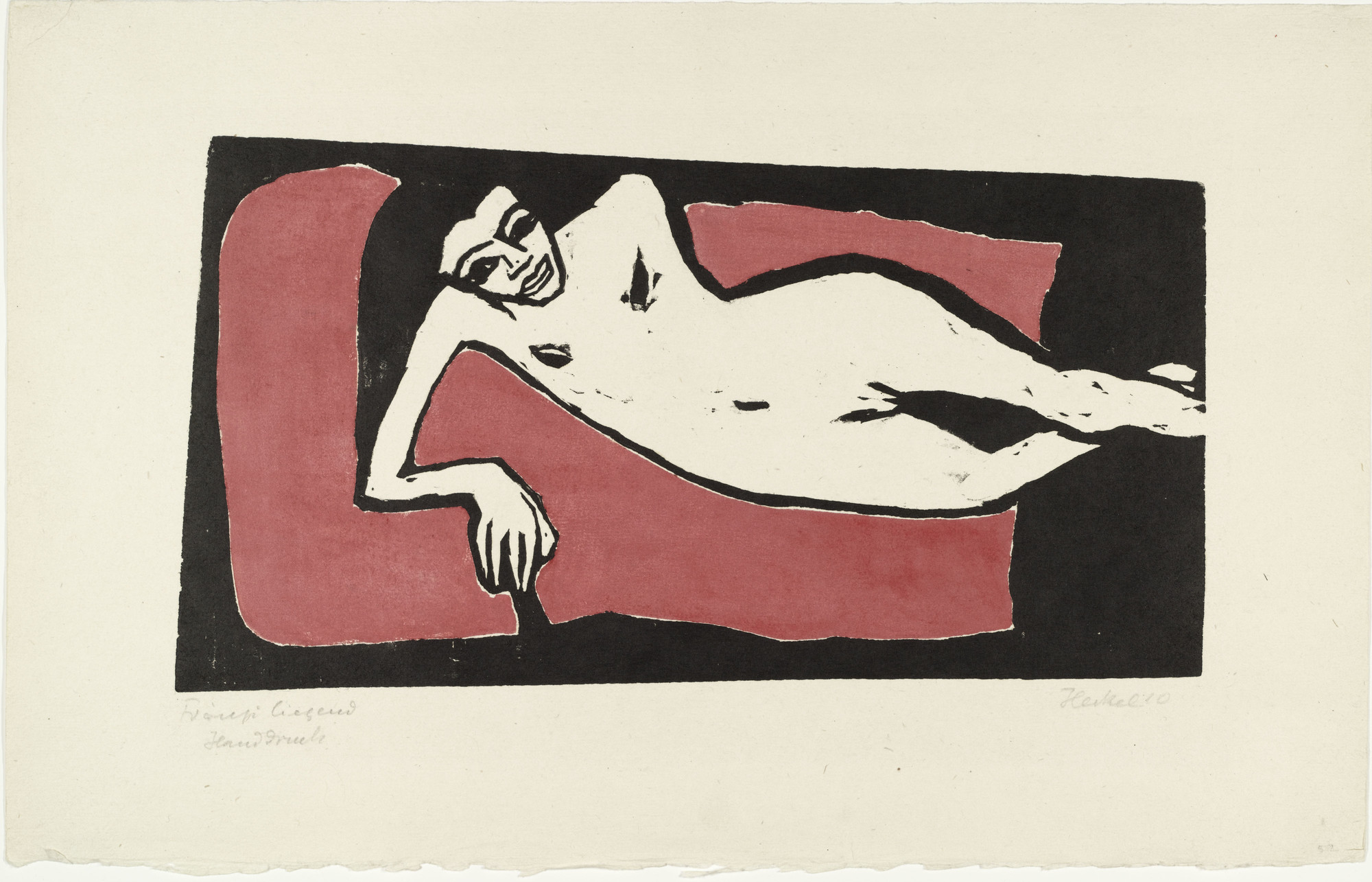Die Brücke was a pioneering group in the German Expressionist movement. Founded in 1905 in Dresden by four architecture students—Ernst Ludwig Kirchner, Fritz Bleyl, Erich Heckel, and Karl Schmidt-Rottluff—these young artists were disillusioned with the conservative art scene of their time. Seeking to break away from academic traditions, the group aimed to create a new form of art that bridged the past and the future, combining traditional and modern elements. Their artistic movement became known as Die Brücke, meaning “The Bridge” in English.
The name, Die Brücke, was inspired by a passage from Friedrich Nietzsche’s “Thus Spoke Zarathustra,” which speaks of man as a bridge between the animal and the Übermensch (superman). This metaphor encapsulated their desire to forge a path from the old to the new, embracing innovation while acknowledging the influence of the past. This art movement drew inspiration and influence from the works of Vincent van Gogh, Edvard Munch, and African and Oceanic art. They aimed to create art that was raw, emotive, and unfiltered, capturing the essence of human experience and emotion.
Die Brücke artists were united by a shared vision of art as a means of personal and social liberation. They believed that art should be an expression of inner emotion rather than a mere depiction of external reality. This was a radical departure from the prevailing naturalistic and impressionistic styles of the late 19th and early 20th centuries.
In 1906, Kirchner wrote the Brücke Manifesto and cut it in wood. “Everyone who reproduces, directly and in unadulterated form, whatever he senses the urge to create, belongs to us,” it proclaims. Their manifesto declared their intent to reject traditional academic training and to create a new, more authentic art. They sought to explore themes of human emotion, nature, and the modern experience, often highlighting the alienation and anxieties of contemporary life.
The manifesto, set in a wood block-like manner in a slender vertical rectangle with angular capital letters, has become an artwork. Brücke artists also used woodcuts to embellish the annual reports, exhibition announcements, and catalogues they sent to “passive members”—patrons who supported the group through annual donations.
Die Brücke artists are renowned for their bold use of color, dramatic lines, and simplified forms. Their work often featured exaggerated and distorted figures, intended to convey psychological and emotional intensity. They utilized techniques such as woodcut printing, which allowed for stark contrasts and a raw, unpolished aesthetic.
A hallmark of Die Brücke’s style was the focus on the human figure, often depicted in natural settings or urban environments. These scenes conveyed a sense of immediacy and vitality, capturing the dynamic and sometimes chaotic essence of modern life. The group’s frequent use of nudes was both a celebration of natural beauty and a statement against the prudishness of their time.
Die Brücke, known for its vibrant colors and raw emotions, boasted several talented artists. Ernst Ludwig Kirchner captured the frenetic energy of Berlin street life in works like “Street, Dresden” (1908), while Erich Heckel explored human connection in “Two Men at a Table” (1912). Karl Schmidt-Rottluff, meanwhile, used color and form to evoke moods, as seen in “Houses at Night” (1912). This desire to push boundaries extended to their unconventional first exhibition in 1906 at the Seifert Lamp Factory in Dresden, a move that reflected their wish to connect with a wider audience beyond traditional art spaces. Subsequent exhibitions in Berlin and other cities solidified their reputation as a significant force in the art world.
Die Brücke disbanded in 1913, though the exact reasons for its dissolution remain unclear. Despite its relatively short lifespan, the group exerted a profound influence on the trajectory of modern art. Their emphasis on emotional expression and their bold, experimental techniques influenced subsequent movements, including Abstract Expressionism and Neo-Expressionism. Artists like Jackson Pollock and Willem de Kooning can trace elements of their style back to the innovations of Die Brücke.
Die Brücke also played a crucial role in the development of German Expressionism, paving the way for other groups like Der Blaue Reiter. Their focus on personal and emotional authenticity resonated with the turbulent socio-political landscape of early 20th-century Germany, providing a powerful means of grappling with the anxieties and upheavals of the time.







